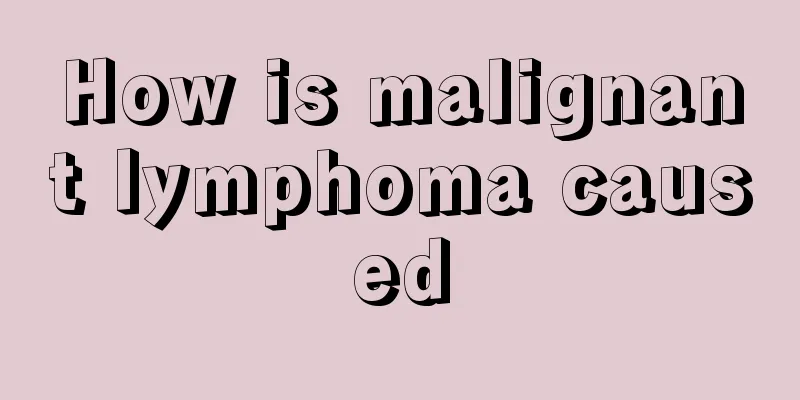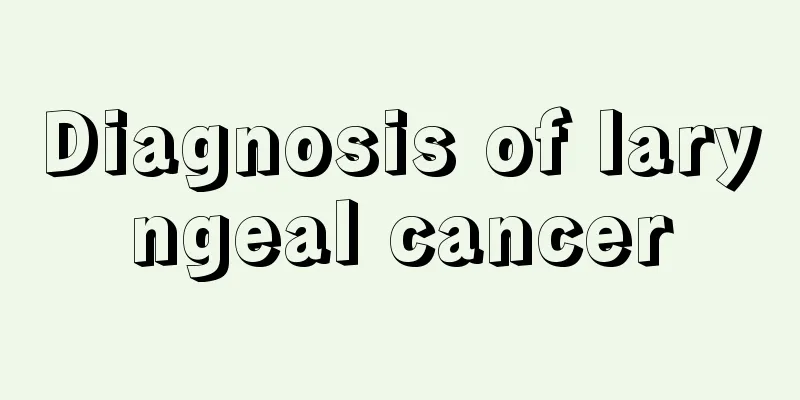What are the common treatments for liver cancer? What methods can be used to detect liver cancer?

|
How should liver cancer be treated and examined? Doctors will choose the most appropriate method based on the symptoms and severity of liver cancer. While patients and their families actively cooperate with doctors for examination and treatment, they should also understand the common treatments and examination methods for liver cancer. Let's learn about them together. Common treatments for liver cancer Surgical treatment. It has certain limitations and is suitable for radical treatment of early, mid-term and localized liver cancer, and palliative treatment of late stage. Its advantage is that it can temporarily remove large cancerous lesions and has fewer side effects. Radiotherapy is also an important means of cancer treatment. It is suitable for local treatment after liver cancer surgery, using the focus of multiple beams of radiation to create high energy to kill cancer cells. Traditional Chinese medicine treatment. In clinical practice, traditional Chinese medicine treatment or the combination of traditional Chinese and Western medicine is more commonly used to treat advanced liver cancer, which can achieve good therapeutic effects. Traditional Chinese medicine syndrome differentiation treatment can strengthen the body and eliminate evil, which can make up for the shortcomings of Western medicine, reduce its toxic side effects, and can improve the patient's own immunity and inhibit cancer cells. It is a good choice. Chemotherapy. If the laparotomy reveals that the tumor cannot be removed, or as a follow-up treatment for palliative tumor resection, regional chemotherapy embolization can be performed by placing a pump (subcutaneous buried perfusion device) in the hepatic artery and/or portal vein. For patients who are estimated to be unresectable by surgery, radiological interventional therapy can also be performed, with selective cannulation through the femoral artery to the hepatic artery, and embolic agents (commonly used such as iodized oil) and anticancer drugs injected for chemotherapy embolization, which can give some patients the opportunity for surgical resection. Radiotherapy: For patients with good general condition, good liver function, no cirrhosis, no jaundice, ascites, hypersplenism and esophageal varices, relatively localized tumors, no distant metastasis, and who are not suitable for surgical resection or have recurrence after surgery, comprehensive treatment with radiation as the main method can be used. In addition, what other methods can be used to check liver cancer? Liver cancer screening methods Ultrasound examination. Ultrasound examination is economical and convenient. It can show the size, shape and location of the tumor, and the diagnostic accuracy rate is about 90%. The detection rate of liver lesions is also relatively high. Generally speaking, it takes about 4 to 6 months for liver cancer to grow from 1 cm to 3 cm. So if the first B-ultrasound liver cancer examination does not show liver cancer, take another examination after 4 to 6 months. The liver cancer should still be below 3 cm, and the treatment effect should be good. CT. CT is a very important method for liver cancer examination, and it is widely used in China. However, when the diameter of liver cancer is less than 2 cm or the density is close to that of normal liver parenchyma, it is difficult to show it on CT. Liver cancer is a diffuse disease, and it is not easy to detect it on CT; it is difficult to distinguish between primary and secondary liver cancer. Magnetic resonance imaging (MRI). In liver cancer, T1 and T2 relaxation times are prolonged, and in more than half of cases, the tumor shows a lower or equal signal intensity than the surrounding liver tissue on the T1-weighted image, while it shows a high signal intensity on the T1-weighted image. pET-CT. pET-CT is one of the examination items for early detection of liver cancer. Patients with hepatitis B and other conditions may consider the examination. pET-CT is a functional molecular imaging system that integrates pET and CT. It can not only accurately locate the anatomical location of the lesion through CT morphological imaging, but also reflect the biochemical metabolic information of the liver's space-occupying tissue through pET functional imaging. At the same time, whole-body scanning can understand the overall condition and evaluate the metastasis, so as to achieve the purpose of early detection of lesions. At the same time, it can understand the size and metabolic changes of the tumor before and after treatment. For treatment and examination of liver cancer, please consult a relevant doctor. |
Recommend
Is it easy to get pregnant during menstruation?
The menstrual period is a process of corpus luteu...
How to style your hair
How to dress your hair is a topic that many girls...
What causes pain in the bones of the feet?
Pain in the instep bones can have some adverse ef...
What tests should be done for ovarian cancer?
What examinations should be done for ovarian canc...
Will anemia cause dizziness
Anemia is a problem that many people have, especi...
What are the basic knowledge about rectal cancer
Rectal carcinoid is a common type of digestive tr...
Will nasopharyngeal cancer cause cough
Will nasopharyngeal cancer cause cough? 1. Patien...
Is it necessary to do esophageal endoscopy to diagnose esophageal cancer?
Although esophageal cancer is a malignant tumor d...
Does eating Gastrodia elata work for headaches
Migraine is generally considered a neurovascular ...
What is the diagnosis method for thyroid cancer
What is the diagnosis method for thyroid cancer? ...
What happens to the skin after using hormones?
Hormones are very common things in our lives. Hor...
What are the treatments for liver cancer? Detailed explanation of liver cancer treatments and prevention measures
Liver cancer is a malignant tumor disease with a ...
What is aseptic operation
In modern society, aseptic operation is very impo...
How to choose reading glasses
When people reach a certain age, their eyes will ...
What to do if the body is too loose
Many times people appear to have loose flesh due ...









